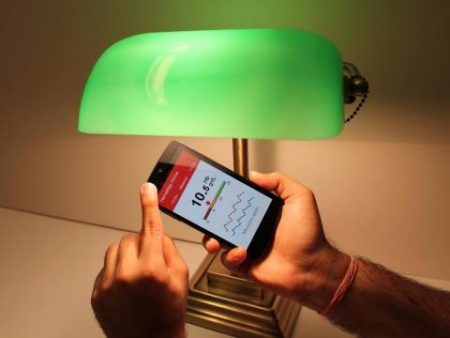September 8, 2016 – University of Washington researchers in Seattle have developed a way for smartphones to detect anemia using the phone’s camera and an external light source. The results provide accuracy equivalent to FDA-approved anemia tests. The research team’s HemaApp uses a Nexus 5 smartphone camera and found they could measure hemoglobin by capturing light passing through a person’s finger. They then analyzed the light characteristics recognizing the changes in the colour of the blood to indicate red blood cell deficiency. In a test at Seattle Children’s Hospital involving 31 patients, it was found to be as accurate as a commercial anemia test that uses LED but not as accurate as a conventional blood test.
What are the implications? For home use it gives users the ability to monitor their hemoglobin levels. This is important for example for home monitoring to during pregnancy to ensure that an expecting mother isn’t experiencing anemia. In blood donor clinics, the app could replace the pin prick blood analysis done as a pre-screening test. In many Developing World countries anemia is a persistent and chronic condition that often goes undiagnosed. A test like HemaApp could identify the condition and monitor the effectiveness of treatment without elaborate on-site laboratory testing.
Current accuracy of the test shows sensitivity and precision of 85.7% with an LED light and 76.5% with incandescent external lighting. These results compare favorably with current FDA approved noninvasive hemoglobin measuring devices.
The goal of the University of Washington team is not just to identify anemia but to use the smartphone as the one ubiquitous platform loaded with apps for screening a wide range of diseases and medical conditions. This is an ideal way to deliver improved medical diagnostics for Developing World countries where laboratories equipped with myriad devices can be cost prohibitive.
Seen above, the graphic for a paper presented and declared the best, at this years International Joint Conference on Pervasive and Ubiquitous Computing, the University of Washington authors show just how HemaApp works.
HemaApp bombards a patient’s finger with different light wavelengths from visible to infrared and creates a series of videos. It uses its software to analyze how colors are absorbed and reflected across these wavelengths to detect hemoglobin levels and other blood components like plasma. It uses processing algorithms to eliminate the variable of different skin tones, body mass and physical characteristics of the patient’s finger.
States senior author, Shwetak Patel, Washington Research Foundation Entrepreneurship Endowed Professor in Computer Science & Engineering and Electrical Engineering, “new phones are beginning to have more advanced infrared and multi-color LED capabilities….but what we found is that even if your phone doesn’t have all that, you can put your finger near an external light source like a common light bulb and boost the accuracy rates.”
Next steps involved wider testing to improve accuracy rates. Of particular interest for Sub-Saharan Africa and for Afro-American patients is using HemaApp to help screen for sickle cell anemia.
The authors caution that HemaApp as of yet is not a replacement for more accurate blood tests that involve drawing a small sample for analysis.











[…] Gizmos & Gadgets: Potential New Phone App Could Detect Anemia – This is important for example for home monitoring to during pregnancy to ensure that an expecting mother isn’t experiencing anemia. In blood donor clinics, the app could replace … HemaApp to help screen for sickle … […]